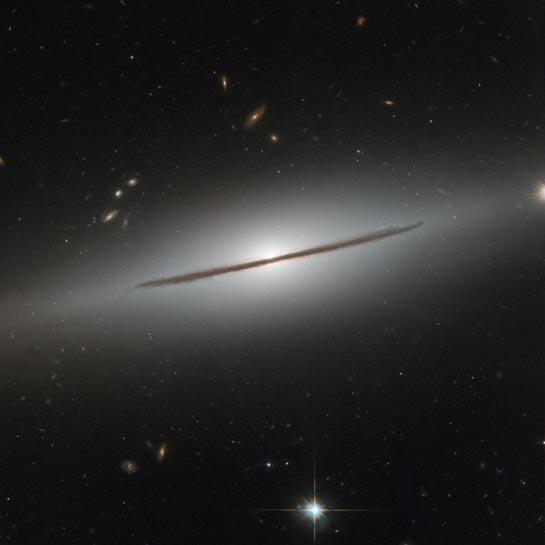
Spiral Galaxy
RA 02h 39m 23.6s Dec +01° 05' 38?
Cetus
11.6
3.3 × 1.1 arcmin
100 million light years
ESA/Hubble & NASA
May 14, 2018
ABOUT THIS IMAGE:
Resembling a wizard's staff set aglow, NGC 1032 cleaves the quiet darkness of space in two in this image from the NASA/ESA Hubble Space Telescope.
NGC 1032 is located about a hundred million light years away in the constellation Cetus (The Sea Monster). Although beautiful, this image perhaps does not do justice to the galaxy's true aesthetic appeal: NGC 1032 is actually a spectacular spiral galaxy, but from Earth, the galaxy's vast disc of gas, dust and stars is seen nearly edge-on.
A handful of other galaxies can be seen lurking in the background, scattered around the narrow stripe of NGC 1032. Many are oriented face-on or at tilted angles, showing off their glamorous spiral arms and bright cores. Such orientations provide a wealth of detail about the arms and their nuclei, but fully understanding a galaxy's three-dimensional structure also requires an edge-on view. This gives astronomers an overall idea of how stars are distributed throughout the galaxy and allows them to measure the "height" of the disc and the bright star-studded core.
NGC
1032 was discovered by William Herschel on December 18, 1783